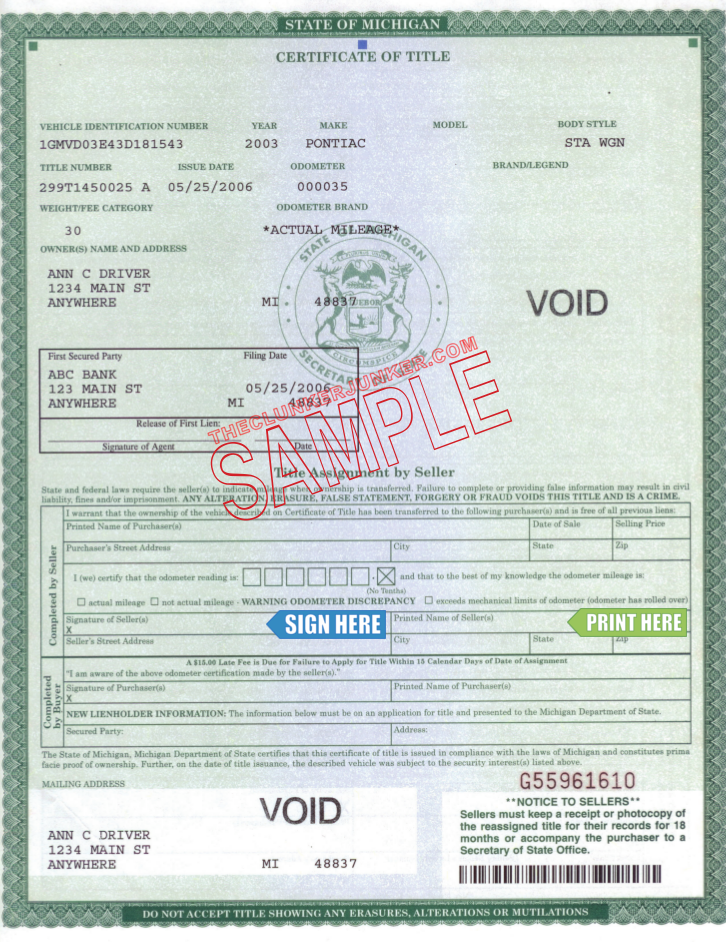11459 views
Ohio has plenty of drivers on the road with a variety of vehicles thanks to all its wonderful seasons. From snowmobiles to ATVs, Ohio has it all. In fact, the Buckeye State is known for its best snowmobiling trails including West Branch State Park which has eight miles worth of trail and Mohican Memorial State Forest.
Ohio also has some great areas for off-road motorcycles or dirt bikes. Bear Creek Ranch and Pike State Forest are popular dirt biking trails in OH. Bear Creek Ranch has 26 miles of trails across 180 acres, just south of Canton near East Sparta. For the most part in Ohio, the process of titling and registering cars, minivans, SUVs, trucks, and motorcycles is similar. But some types of vehicles have different and specific requirements. For example, APV’s, motorhomes, and scooters.
In Ohio, all-purpose vehicles don’t include golf carts or utility vehicles meant to transport materials or cargo
APV and ATV tags in Ohio
All-purpose vehicles (APV) or all-terrain vehicles (ATV) like trail bikes, mini-bikes, and off-highway motorcycles (OHM) need to be registered in Ohio. But only APV and OHM vehicles need a title (one you need before getting OH tags). If you bought an all-purpose vehicle directly from a dealership, the APV title has to be in your name. The dealer has 30 days to sign over the title to you.
SEE ALSO: HOW TO RENEW OHIO TAGS
If you bought this type of vehicle from a private seller, make sure the title is transferred to you at time of sale. The penalty for an unregistered APV, snowmobile or off-highway motorcycle is between $50 and $100. Registration certificates and decals for those are good for three years, and expire on December 31 of the last year.
The penalty for an unregistered APV, snowmobile or off-highway motorcycle is between $50 and $100. Registration certificates and decals for those are good for three years, and expire on December 31 of the last year.
For those just visiting OH, to operate an APV, OMV, or snowmobile on Ohio you have to apply for a temporary permit at the Deputy Registrar’s Office if where you’re from doesn’t have tags requirements. That permit allows you to use an all-purpose vehicle for a year.
Custom-built cars in the Buckeye State
To get tags for a custom-built vehicle, the only difference with traditional registration in OH is the added inspection. There are OH state highway patrol inspection stations across Ohio, including in Brook Park, Columbus, and Troy. Before a self-assembled vehicle or a salvage vehicle can be titled in Ohio, an inspection of the vehicle must be completed. This inspection is intended to verify the ownership of all parts of the custom-built vehicle plus review all the required documentation.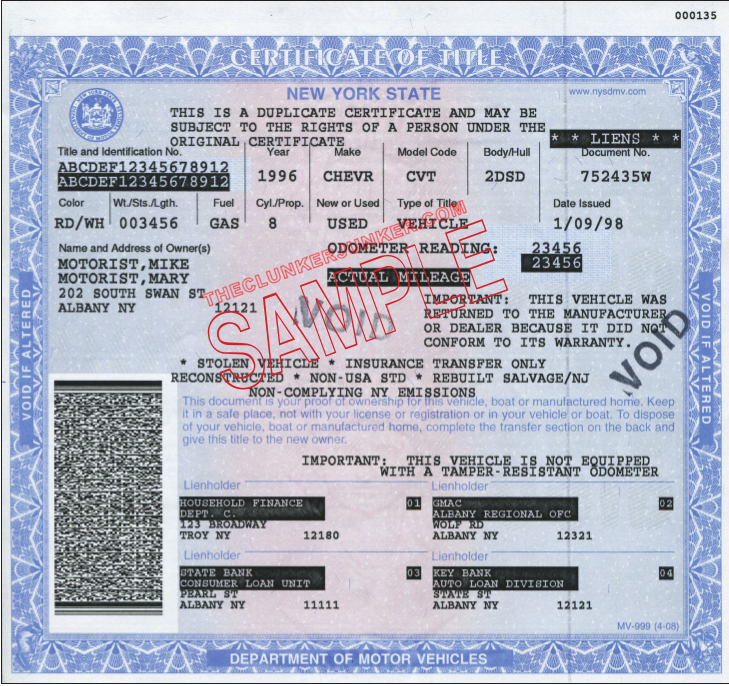 This inspection is not meant for certifying the safety of the custom-built car.
This inspection is not meant for certifying the safety of the custom-built car.
Canoes, kayaks, and rowboats are eligible for an alternative registration; smaller registration decal and doesn’t require registration numbers to be painted on the side
OH mopeds and scooters
Yes, Ohio tags are needed for mopeds and scooters. The moped need a rear license plate, but not a title. A moped in OH is defined as having two or three wheels with a motor of no more than a 50 cc and 1 hp, that can travel over 20 mph. Scooters, dirt bikes and other motorized bikes that aren’t mopeds are categorized as motorcycles in Ohio.
On the other hand, to ride a scooter in the Buckeye need a motorcycle license or endorsement, and are required to follow all the traffic and safety laws that apply to motorcycles. A scooter has to be registered, titled, and insured.
OH motorhomes, trailers, and such
For recreational vehicles (RVs) including motorhomes, the process to get tags is the same as a conventional registration.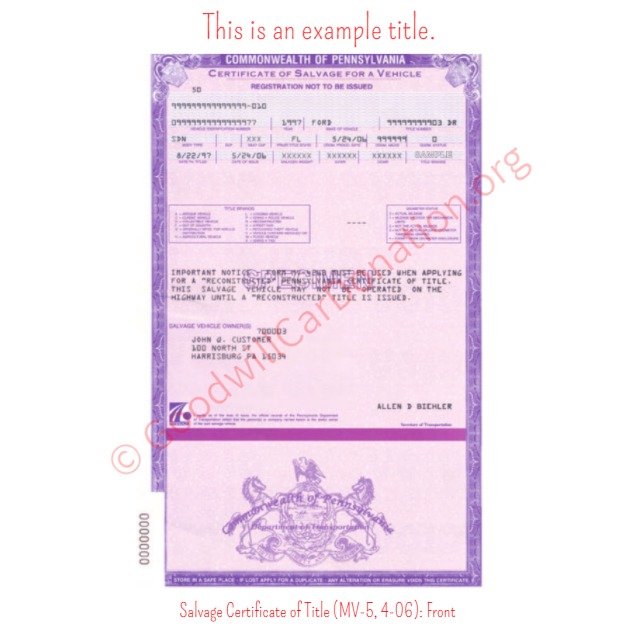 Depending on the size/weight of your RV, the OH registration cost will vary. All travel trailers, including fold down campers and truck campers (over 4,000 lbs.) have to have a title in Ohio. These types of vehicles must be registered too. You need a photo ID, title, any required inspections, and pay you registration fees. But boat trailers and utility commercial trailers less than 4,000 lbs. don’t need a title.
Depending on the size/weight of your RV, the OH registration cost will vary. All travel trailers, including fold down campers and truck campers (over 4,000 lbs.) have to have a title in Ohio. These types of vehicles must be registered too. You need a photo ID, title, any required inspections, and pay you registration fees. But boat trailers and utility commercial trailers less than 4,000 lbs. don’t need a title.
Any vehicle last previously registered or titled in another state must have a physical inspection done before being titled in Ohio
Boats, Canoes, and more watercrafts in Ohio
The Ohio Division of Parks and Watercraft requires all recreational vehicles to be registered. This includes boats, kayaks, canoes, and paddle boats.But kiteboards, lifeboats, boats from other countries, paddle boats and documented commercial don’t need a registration. Boats registered in another state in Ohio waters for less than 60 days don’t need to be registered. All boats 14 ft and longer as well as outboard motors 10 hp or more must have a title.
After reading this article 5000 readers chose eTags
Maryland
When you buy or sell a vehicle, there are a number of steps you must complete to make sure everything goes smoothly and ownership of the car is legally transferred. One thing the seller needs to do is transfer the title to the buyer.
Transferring a title in Ohio is a pretty simple process in most cases. You will have to fulfill the Ohio title transfer requirements which include filling out a DMV title transfer form and paying any applicable title transfer fees.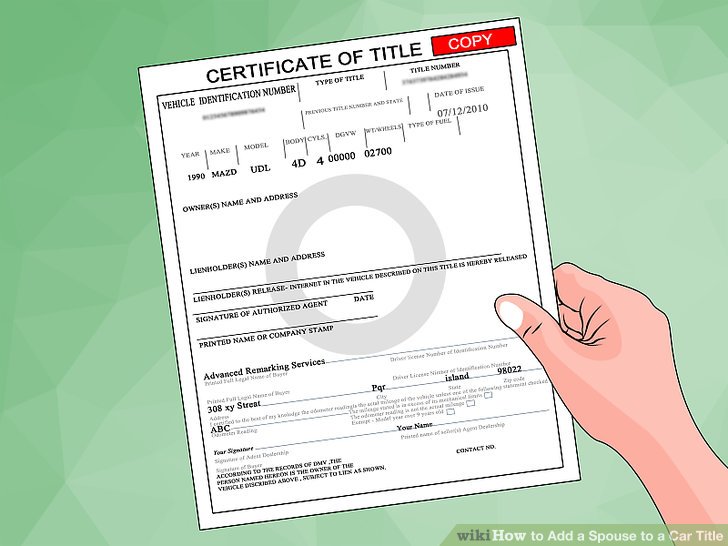
Ohio has a mostly run-of-the-mill process for transferring a car title after a sale. The first step requires the seller to sign the title over to the buyer.
The buyer will then need to complete a title application and, in some cases an odometer disclosure, before bringing all of these items to the county titling office.
To transfer a car title in Ohio, the seller needs to transfer the title to the buyer with a notarized signature. The buyer will also need to fill out a title application and possibly an odometer disclosure.
The buyer can then take this paperwork to the county titling office where they will need to pay a fee to complete the title transfer.
Please note, there may be additional paperwork required if the vehicle is being purchased from out of state or the vehicle is part of an estate.
Ohio has pretty straightforward fees for vehicle titling, but there are some variables that could potentially affect how seamless the process is once you get to the DMV.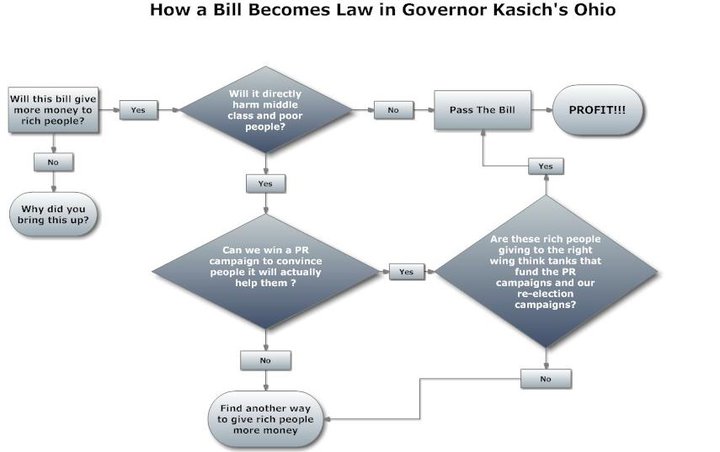 The title certificate and duplicate title fee are both $15, but you will need to pay a fee of $5 for an out-of-state inspection.
The title certificate and duplicate title fee are both $15, but you will need to pay a fee of $5 for an out-of-state inspection.
You will also have to pay a $5 fee if you fail to transfer your vehicle title within 30 days of moving to Ohio or purchasing it from a dealer. “How much is a title transfer?” is a tough question to answer precisely, but it shouldn’t cost you more than $40 altogether.
Filling out a title transfer form for your Ohio vehicle is easy. The first section asks for some standard information about the applicant (you). Next, you will need to check a box to indicate whether you’re applying for an original title certificate, a duplicate title, a replacement or memorandum title, or a salvage title.
You only need to fill out the section whose box you checked. After you’re finished, you will need to sign the form and have your signature notarized.
You can download the Application for Certificate of Title to a Motor Vehicle (Form BMV3774) through the official Ohio DMV website by clicking here.
If your title is lost or damaged and you need to apply for a duplicate, you can do that simply by filling out the title application and checking the box that reads “Duplicate certificate of title”.
You will need to indicate what happened to your original title and provide your title number. There will also be a $15 duplicate title fee.
When the owner of an Ohio vehicle is deceased, you will have to take extra steps to transfer a title. If you are the surviving spouse, you can bring a car title, death certificate and Surviving Spouse Affidavit to the title office.
The Clerk of Courts Surviving Spouse Affidavit (Form BMV3773) can be downloaded through the official Ohio DMV website by clicking here.
If the estate which the vehicle is a part of is in probate, you will need to wait for the court to assign ownership of the vehicle to somebody.
In any case, an odometer disclosure statement will not be required.
If the current title for a vehicle is lost or damaged, the owner will need to apply for a duplicate before selling the vehicle. This current title can then be used to transfer ownership to the buyer.
Transferring a car title to a family member is the best-case scenario when it comes to title transfers.
You can both go to the county titling office together with the necessary paperwork and transfer the title, and you won’t have to state the sale price if there was no actual sale.
When somebody purchases a vehicle in Ohio, it is their responsibility to transfer the title. If the buyer doesn’t complete the title transfer and is ticketed or fined, you may be held responsible.
To ensure the title transfer is completed, go to the titling office with the buyer and transfer the title at the time of the sale.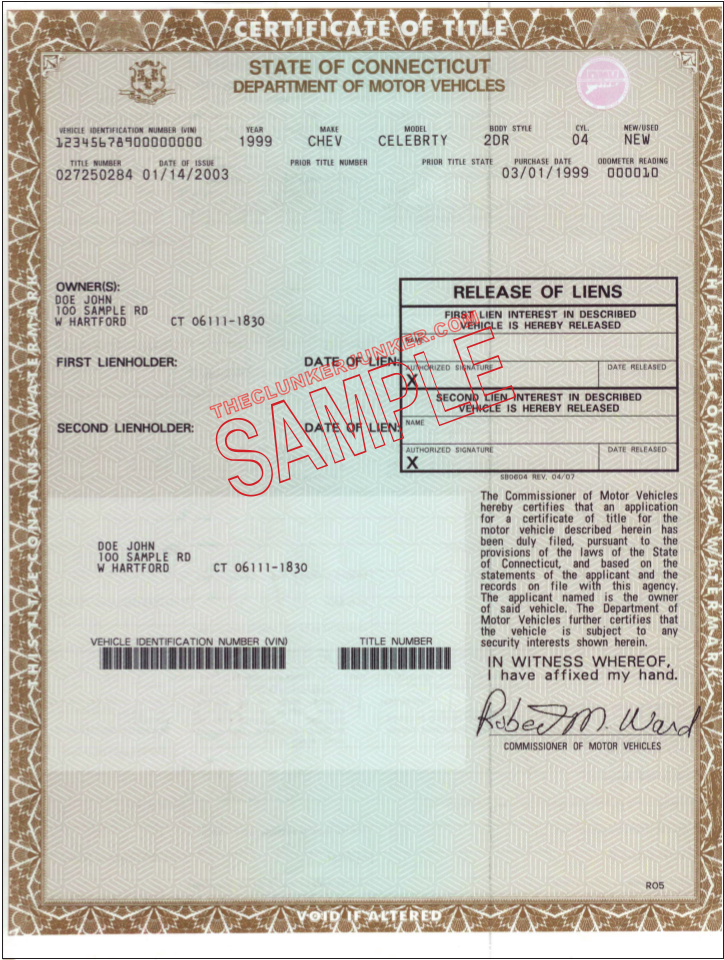
If the buyer doesn’t complete the title transfer and you are being held responsible for traffic violations, contact your local BMV office. You will need to prove that you sold the car and attempted to transfer the title.
For more information on questions specific to your title transfer scenario, clarification on the title transfer process in the state of Ohio, or for OH DMV hours and to find the DMV location nearest to you, visit the official Ohio Department of Motor Vehicles website by clicking here.
Are there any questions about transferring a car title that we didn’t cover?
We are constantly updating our content and welcome your feedback. Leave us a comment and let us know any other questions you might have regarding how to transfer a car title in the state of Ohio.
Gears are transmission modes that allow you to adapt your ATV to different tasks and road conditions. Shifting increases traction or top speed.
Shifting increases traction or top speed.
In this article, we will tell you how to shift gears on ATVs with different types of transmission in order not to break anything and confidently overcome any routes.
The CVT transmission is the most popular 4WD utility ATV.
The variator consists of two pulleys. A belt is stretched between them, which rotates along a larger or smaller radius as the engine speed changes. This ensures a smooth change in gear ratio. In fact, the same thing happens as when moving the gears in a manual transmission.
How the variator worksThe variator is combined with the gearbox. The shift lever can be in five different positions:
L - downshift;
H - overdrive;
N - neutral;
P - parking lock;
R - reverse.
Downshifting allows the ATV to climb steep slopes, off-road, or haul loads more easily and without damage to the CVT. In overdrive, the technique can develop maximum speed. It is recommended to use it for driving faster than 10 km/h.
In overdrive, the technique can develop maximum speed. It is recommended to use it for driving faster than 10 km/h.
There is no conventional clutch on an ATV with a CVT. Instead, a centrifugal automatic. Therefore, before each shift, be sure to come to a complete stop, apply the brakes and reduce the engine speed to idle.
To stop, just remove your finger from the throttle trigger - the ATV will quickly slow down and stay even in the H or L position, until the driver again increases the engine speed.
For a long stop, it is better to switch to neutral. To prevent the equipment from rolling away, you can put a hand brake or gear P.
A manual transmission is usually used on small displacement rear-wheel drive ATVs. Structurally, it is similar to the transmission of a high-speed bicycle, only instead of sprockets there are gears. They are connected in different combinations depending on the selected gear.
Structurally, it is similar to the transmission of a high-speed bicycle, only instead of sprockets there are gears. They are connected in different combinations depending on the selected gear.
In order not to break anything when shifting gears, there is a clutch. This mechanism decouples the transmission from the engine and allows the gears to engage without load. To control the clutch there is a separate lever on the steering wheel.
On an ATV with a manual transmission, the gears are shifted by a lever located at the left footrest. How exactly depends on the specific model. Popular options:
N is a neutral gear, in which the vehicle will not go anywhere. R is reverse.
This is how the design of the ATV manual transmission looks like
What is the difficulty. It can be difficult for a beginner to move off. If you release the clutch too quickly or add insufficient rpm, the engine will stall. If you give too much gas and drop the clutch, the vehicle will move with a jerk and may even jump out from under the rider.
What to do. At first, you can try to move off without gas at all - just release the clutch smoothly and slowly. This will help you feel the moment when the ATV is ready to go and you need to increase the engine speed.
What is the difficulty. At first it is not obvious when to switch.
What to do. You can focus on the sensations. If vibration is felt, the ATV twitches and accelerates sluggishly, you need to switch down, and if the engine “roars”, up. Another option is to look at the speedometer. Each gear has its own optimal speed range. Here are the average values:
Each gear has its own optimal speed range. Here are the average values:
On the manual transmission, the gears are shifted with a foot lever. Depress the clutch before every shift.
On the CVT transmission, the gears are shifted by hand using a lever located on the side of the driver. Before each shift, we completely stop the equipment and hold the brake.
home
Reviews
General information on customs clearance of vehicles
02.10.2017
An ATV is a four-wheeled vehicle equipped with a motorcycle handlebar and a motorcycle seat and designed for off-road driving. Due to their high cross-country ability, we also call them all-terrain vehicles. The appearance of ATVs was preceded by the development in the 70s of the last century by the Japanese of a hybrid between a motorcycle and a car called a tricycle, the car was equipped with three wheels. The machine was designed to help on the farm and had excellent cross-country ability. At home, the tricycle did not receive due recognition, but the appearance of these machines on American beaches made a splash. Tricycles have gained popularity in certain circles of extreme sports enthusiasts, who have appreciated its off-road driving performance. The next step in the development of all-terrain vehicles was the appearance of a four-wheeled model. This option was called an ATV and differed from the progenitor in greater stability, which further increased the number of fans. Modern ATVs do not have fundamental differences from the first models. The increased popularity has influenced the variety of models presented by the manufacturers of this equipment. There were sports options, models for children, farmers and tourists, with differences determined by the purpose.
The appearance of ATVs was preceded by the development in the 70s of the last century by the Japanese of a hybrid between a motorcycle and a car called a tricycle, the car was equipped with three wheels. The machine was designed to help on the farm and had excellent cross-country ability. At home, the tricycle did not receive due recognition, but the appearance of these machines on American beaches made a splash. Tricycles have gained popularity in certain circles of extreme sports enthusiasts, who have appreciated its off-road driving performance. The next step in the development of all-terrain vehicles was the appearance of a four-wheeled model. This option was called an ATV and differed from the progenitor in greater stability, which further increased the number of fans. Modern ATVs do not have fundamental differences from the first models. The increased popularity has influenced the variety of models presented by the manufacturers of this equipment. There were sports options, models for children, farmers and tourists, with differences determined by the purpose.
Customs clearance of an ATV from Europe is possible both for an individual and for a legal or individual entrepreneur. During customs clearance for a physicist, it is necessary to pay the total customs payment (CTP), which is identical to registration through the filing of a declaration for goods (DT). STP includes customs clearance fee, customs duty and VAT in the amount of 18%, in addition to this, it is subject to payment of a recycling fee. The recycling fee rate depends on the engine size. It is possible to carry out registration only in a certain customs authority that has the competence to issue a passport for a self-propelled vehicle (PSM). In accordance with GOST R, these vehicles are not intended for driving on public roads and, accordingly, are not registered with the State traffic inspectorate, but are subject to registration with the State Technical Supervision Authority. To manage such transport, you will need not the rights of the classic type, but the certificate of the tractor driver-driver.
Customs clearance of an ATV from Europe through the submission of a DT will require you to fill out a declaration and provide the necessary package of supporting documents to the customs authority. The most important thing is that all this must be done electronically, and for this it is necessary to have an appropriate digital signature. A distinctive feature of customs clearance for an individual is the need to check this car for compliance with intellectual property rights. This can be found in the related article. It is possible to carry out customs clearance of an ATV only in certain authorities, which, after completing the clearance and paying the recycling fee, will be able to issue PSM.
I would like to say separately about the existing confusion between ATVs and quadricycles. Despite the external similarity, these machines have significant differences and comply with various state standards. First of all, quadricycles are a certain type of motorcycle and, in accordance with the technical regulations for wheeled vehicles, belong to the category L6 or L7.